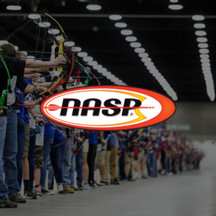Posted by Archery Country on Jan 30th 2023
What is the National Archery in Schools Program (NASP)?
NASP stands for National Archery in the Schools Program. It is a program aimed at promoting and teaching archery to students in grades 4-12 in schools across the United States and around the world. The program was established to improve physical education and provide students with a fun and exciting new activity.
NASP follows strict safety guidelines and provides certified training to physical education teachers, coaches, and instructors. The program also provides equipment and instructional materials to schools, making it easier for them to integrate archery into their physical education programs. The program has been very successful and has grown rapidly, with thousands of schools participating and millions of students learning to shoot a bow and arrow.
What Equipment Does NASP Require?
The National Archery in the Schools Program (NASP) requires the following equipment for participation:
1. Bow: NASP provides Genesis Original bows, which are compound bows designed specifically for use in schools. These bows are adjustable and can be used by students of all ages and sizes.
2. Arrows: NASP requires the use of Easton Genesis arrows, which are specifically designed for use with Genesis bows.
3. Targets: NASP requires the use of specific NASP targets, which are designed to withstand the wear and tear of repeated use in a school setting.
These items are provided to schools as part of the NASP equipment package. The program also provides training materials and guidelines for safe and proper use of the equipment. It is important to note that only approved equipment may be used in NASP tournaments and events.
Many participants chose to purchase their own equipment.
Optional but Useful Equipment for NASP
- Quiver: to hold arrows while shooting.
- Finger tabs: to help shoot the bow and protect finger pads.
Do all schools have NASP?
No, not all schools have the National Archery in the Schools Program (NASP). NASP is a program offered to schools that choose to participate, and while it is growing rapidly and has been very successful, it is not available in every school.
Schools that are interested in participating in NASP can contact the program directly to learn more about the program and how to get involved. Schools that choose to participate receive equipment, training, and materials to help them integrate archery into their physical education programs.
NASP is available in many countries around the world, not just in the United States. However, the availability of NASP in a specific country or region will depend on factors such as local laws, regulations, and cultural attitudes towards archery.
Whats the difference between NASP and JOAD?
NASP (National Archery in the Schools Program) and JOAD (Junior Olympic Archery Development) are both programs that promote archery and encourage participation in the sport. However, they are designed for different audiences and have different goals.
NASP is a program aimed at promoting and teaching archery to students in grades 4-12 in schools. The program provides schools with equipment, training, and materials to help them integrate archery into their physical education programs. The goal of NASP is to provide students with a fun, exciting new activity, and improve physical education. Participating in NASP also can help students develop focus, discipline, and self-confidence.
JOAD, on the other hand, is a program for young archers who are looking to take their skills to the next level. JOAD provides archers with the opportunity to compete, receive coaching, and improve their skills through structured training and competition. JOAD is designed for archers who are interested in pursuing the sport more seriously and competing at higher levels.
While NASP and JOAD are both programs that promote archery and encourage participation in the sport, they are designed for different audiences and have different goals. It is possible for an archer to participate in both NASP and JOAD, depending on their individual interests and goals.

